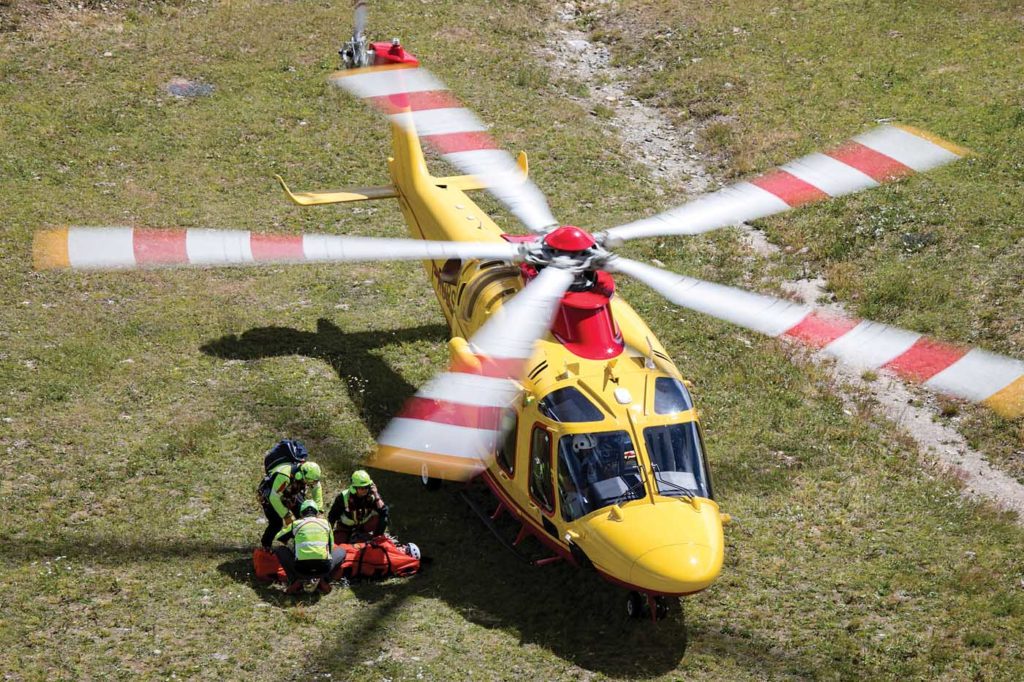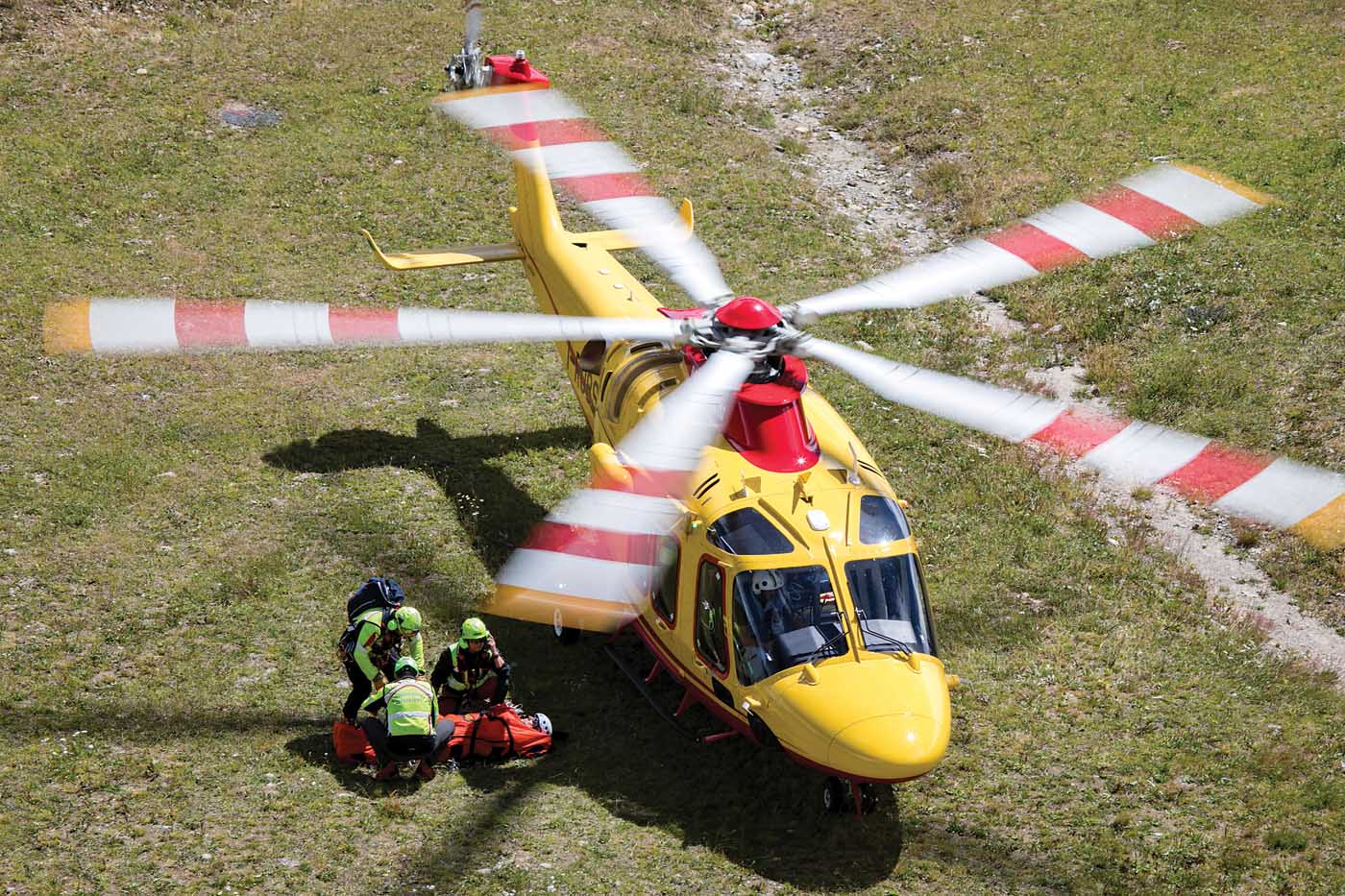The Leonardo AW169, in its varying configurations, is in operation around the world on all continents and in more than 30 countries. Designed to provide the highest levels of versatility, the AW169 has established itself as a true multi-role helicopter, serving rescue and transport activities that include public safety, counter-terrorism, drug enforcement operations and border control, in addition to corporate transport, firefighting, military duties and — perhaps most significant of late — emergency medical services (EMS).
The first AW169 in EMS configuration in the United States entered service in 2019, but the model has a longer history of serving patients’ needs all over the world and can be found as part of emergency systems in New Zealand, Australia, Italy, Great Britain, Korea, Japan, Norway, Sweden and elsewhere.

In the United States, Travis County in south-central Texas, a heavily populated area that includes Austin, was the first to utilize the AW169 for rescue efforts, signing a contract for three AW169 EMS helicopters in 2019. Travis County is a 24/7 EMS provider, offering services that include emergency medical transport, water rescue, search-and-rescue, fire suppression and law enforcement assistance. Travis County’s AW169s transport neonatal, pediatric ICU and other high-risk patients and their medical teams, and are equipped with a rescue hoist and 300-US gallon (1,135-liter) Simplex belly tank. To put it simply, the AW169 is a multi-tasker serving an area that direly needs one.
In April 2020, Leonardo announced that the Health Care District of Palm Beach County, Florida, a Federal Aviation Administration (FAA)-certified air carrier also known by the moniker “Trauma Hawk,” purchased two light-intermediate AW169 helicopters. Palm Beach County is the largest by area in Florida, covering more than 2,300 square miles (595,000 hectares). The county maintains a well-organized instrument flight rules (IFR) infrastructure combining special instrument approaches and transition routing, along with an extensive FAA-approved IFR pilot training program to train for service during inclement weather. A stellar system such as Trauma Hawk’s needed equally exceptional helicopters able to keep up with its robust service to the Palm Beach County community.
But what makes the AW169 such a standout?
Leonardo’s AW169 EMS helicopter provides more power and range than competing light-intermediate twin-engine models. The AW169 features superior cabin size and can transport two patients and five medical personnel, in addition to critical care equipment. Its design allows for flexible interior layouts that provide smooth 360-degree patient access. Wide doors offer easy access with a baggage compartment large enough for extra equipment and stretchers. Large windows support speedy emergency egress and one-engine inoperative capability offers outstanding safety. What makes it even more appealing is the forthcoming availability of a full ice prevention system, which is of need to emergency providers who serve vast and varied terrains during wintry conditions. Challenging weather does not stop the AW169.

The AW169 can make an immediate and measurable impact on EMS services for communities, allowing for a greater number of patients served, more quickly and efficiently, in the most treacherous of weather, over difficult and varied terrain. Its elevated services meet the demanding expectations for quality, service and technology required by world-renowned health care systems and their patients. The type is soon to be provided with a performance increase which is going to make it even more capable. In the coming months and years, watch for more announcements on the growing size of the AW169 fleet used for EMS activities in the United States.
What are the specific capabilities of the AW169?
- The AW169 includes a myriad of technology as part of its base price, technologies that are in some cases unique in the AW169 or in many cases optional on competitors’ aircraft. This includes synthetic vision, helicopter terrain awareness and warning system (HTAWS), ADSB-Out, TCAS II, HUMS and CVR/FDR.
- The AW169 comes standard-equipped with an APU mode capability that allows for all hydraulic, electrical and environmental systems to remain operational while the rotors are stopped. This is a significant advantage when comparing any model against the AW169 as it allows the medical crew to safely have access to all required medical devices while simultaneously keeping the cabin cool or hot depending upon location and time of year. When the patient is ready to be transported, the aircraft is ready for flight in less than 120 seconds.
- The AW169 has been certified to the latest FAR 29 certification requirements which includes a crashworthy fuselage, fuel system and seats, bird strike resistance, 33-minute run dry transmission, and ground safety with high tail rotors and main rotor clearances.
- The AW169 has a larger usable cabin space when compared to competing types along with a larger usable baggage compartment. This allows for the storage of more medical gear and a second stretcher when needed.
What about the specific medical capabilities of the AW169?
- The AW169 has the capability for litter, manual stretcher or power-load stretcher in either transverse or longitudinal orientation.
- The AW169’s loading height is ergonomic without having to bend over to avoid the tail boom. The availability of power-loading technology helps prevent injuries, specifically back injuries when loading heavier patients.
- The medical crew of the AW169 has full patient access along with multiple locations for additional providers and specialty medical equipment, specifically cardiac assistive devices and high-risk OB. This allows for the cabin to be quickly reconfigured as required by the operator.
- The AW169 has a cruising speed of 145 knots, making it the fastest aircraft in its class.
- The AW169’s standard tank allows for more than three hours of endurance, providing longer range and reducing the need for refueling with a patient on-board.









